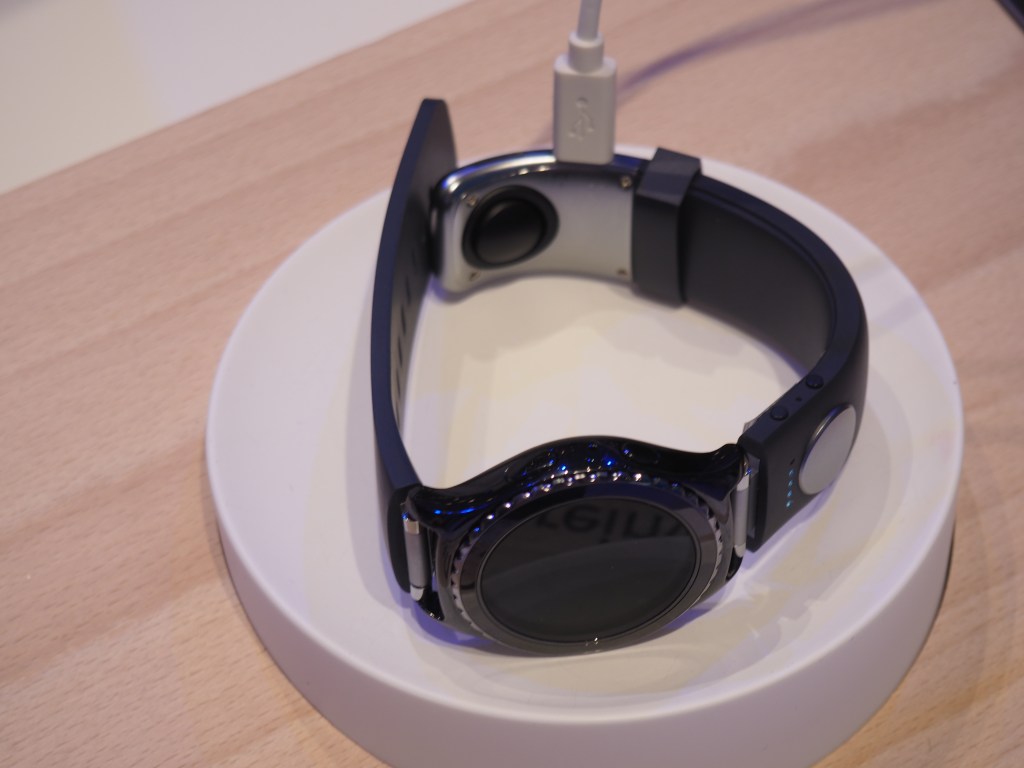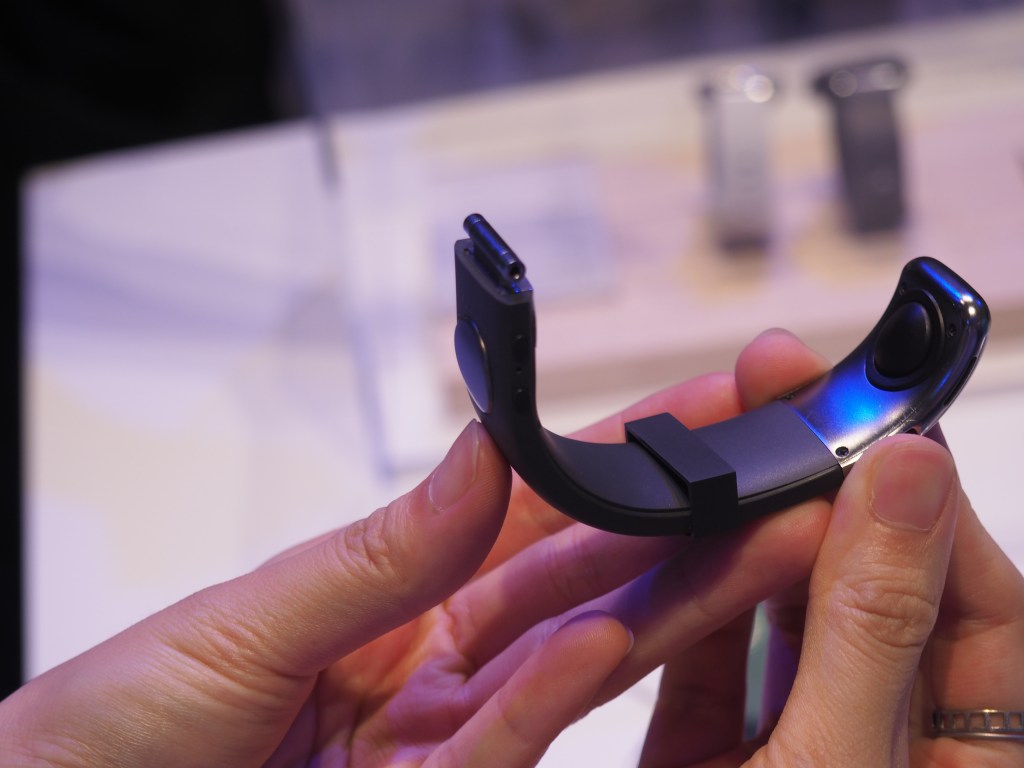A wristband and your finger can replace your phone, but you still need a phone to use it
- Get link
- X
- Other Apps

The most exciting part of Samsung’s IFA booth is also its most understated. Somewhere toward the middle of the huge, brightly lit hall are a series of tables showing off non-Samsung products, a perfect microcosm of the ways in which large electronics corporations are reaching beyond their own walls for inspiration.
Not that these companies don’t have any connection to the technology giant. Many are run by former Samsung employees, spinoffs of sorts from the phone manufacturer. Among the most intriguing is SGNL, a product from two-year-old startup Innomdle Lab that has already earned more than six times its goal after going live on Kickstarter a few days back.

The product is a strap designed to connect to a watch, smart or otherwise. It uses body conduction, sending a vibration from your wrist, through your hand and finger, and ultimately into your ear. You just hold your finger up, secret service-style, and you can take phone calls. I’m not 100-percent sure what the practical application is for such a thing, but I completely understand why 2,000 backers (and counting) went slightly gaga upon watching the video.
And yeah, it works. And there’s a microphone built into the wristband, to boot, so the person on the other side can hear the conversation even with the phone in your pocket. The sound isn’t exactly clear — as anyone who’s tried a headset with similar technology can tell you, it just doesn’t come across as clearly as a devoted speaker. It might have been due in part to the crowded show floor, but my demo sounded roughly as clear as one of those Winston Churchill radio addresses from WW II.
We shall fight on the beaches, and all that.

- Get link
- X
- Other Apps
Popular posts from this blog
What is Muzo?
Using Billion Sound Technology (BST), the Muzo smart acoustic device attaches to any smooth surface and generates dynamic, realistic sounds, while promising to cancel vibration and outside noise. This way, the company claims that Muzo can turn almost anything into a crystal clear acoustic environment, including windows, walls, and desks and other furniture; improve the quality of your sleep, and even help protect your speech privacy. And it promises to do all of this over three steps: Position Muzo toward the noise and reposition if needed. Gently press the large button on the surface to select your ambient noise (or, use the noise-canceling technology by itself). Rotate the button to adjust soundtrack volume. Together, the company tells us that Muzo’s noise-blocking technology can create a “personal zone creator” that can work as an alternative to sleep aids and costly sound machines. Muzo sure sounds cool, but is it worth the money? Is it even a feasible con...
Pup Smart Scanner:
Using a scanner is usually not the most user-friendly experience you'll ever have. Since you'll have to find your scanner, which is probably under about 5 boxes. You then have to connect it to your computer, which the drivers are probably either not installed or out of date. Then you have to put each individual document you want to scan into the device and wait about 2 minutes each. The Pup is a super simple scanner that works just like a camera, and takes just seconds to scan each item you want digitized. How it works is, you select the settings beforehand on how you'd like to scan it, and what you'd like to do with it once it's scanned, then you hold the Pup Smart Scanner above what you'd like to scan, and lasers will square off and show you exactly what you're about to scan. Then just press the button to initiate the scan, and a flash will illuminate the document, and it will scan it within seconds. Perfect for keeping your child's dr...
Comments
Post a Comment